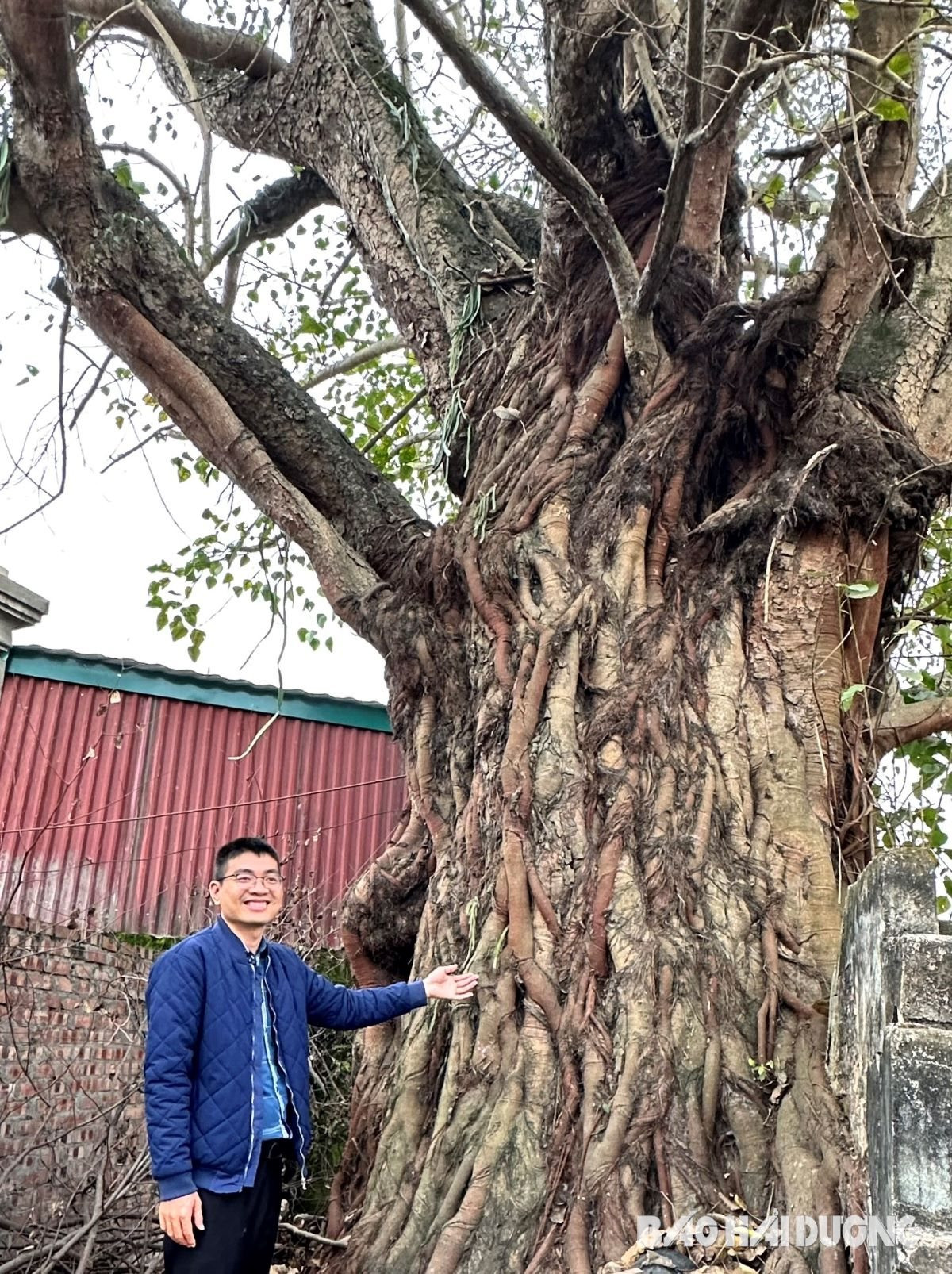The heritage tree of my village is an ancient Bodhi tree, it takes 5-7 people to hug around it.

My childhood was associated with the ancient cotton tree and the Bodhi tree in front of my house. I don’t know when the two trees were built, but I remember that when my grandmother was still alive, she often told me that when she got married, the tree was already this big! But now the cotton tree is dead, and only the Bodhi tree remains.
The Bodhi tree is tall, with a trunk so large that 5-7 people cannot hug it. When spring comes, the tree puts on a soft, supple “coat”. In winter, the tree is bare of leaves, revealing beehives, ant nests, and bird nests that have made their homes on the branches and trunk. Leaves and fruits fall all over the gate, making delicious bait for swarms of flies and bees calling each other to come.
The tree is considered a “historical witness” to the ups and downs of Dai Uyen village (Bach Dang commune, Kinh Mon) from the feudal period, the war against French colonialism and today. One special thing is that my village has gone through a fierce war, with brutal destruction, with bombs and stray bullets from the enemy, but the tree could not be defeated. The tree is still green, towering, standing tall in the blue sky, despite the times, despite the rain and storms, like a shining symbol of the spirit, character, and indomitable will of the “two dews, one sun” farmers of my hometown.
My old house was quite small but had 5 members. When I was a child, my brother and I often slept in the outer room, very close to the ancient Bodhi tree. On hot summer nights, my brothers and I often opened the window wide to welcome the cool breeze and the pleasant, refreshing air from the tree. On stormy days, my mother often told my brothers and I to sleep in the inner bed for fear that the tree branches would fall on the ceiling. My mother's worries were not unfounded, because the neighbor's house had been hit by a Bodhi tree branch.
Those “nuisances” do not bother the houses next to the old tree; on the contrary, everyone is proud to live next to this tree. People in other hamlets or villages call my hamlet the Bodhi tree hamlet or the Kapok tree hamlet, although this phrase does not appear in any administrative documents.
Recently, when I returned to my hometown, I saw the joy, jubilation, and happiness of my hometown people when they heard that the Bodhi tree had been officially recognized as a Vietnam Heritage Tree. The joy was multiplied when I learned that this was the first Vietnam Heritage Tree of Kinh Mon town.
For me, every time I return to my hometown, climbing up to the old roof to see the Bodhi tree closer and more carefully, to listen to the “breathing rhythm” of the tree, to join the “harmony” of birds nesting on this sacred tree is a happy thing. I feel a little sad when the vestiges of the Kapok tree are still there but the tree could not wait until the day to witness its “soul mate” being honored as a Vietnam Heritage Tree.